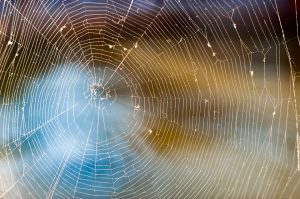As every Spiderman fan is well aware of, spider silk webbing is one of the strongest substances in the world. And now, the United States Army wants a new generation of body armor to be made from it. They are looking to genetically engineer spider DNA with silkworms. They are looking to implant the spider DNA into the silkworm in the hopes of getting silk that will be stronger, and more flexible, than Kevlar.
A company in Michigan has done exactly that and the results have been silk that is, indeed, as strong as spider webbing and stronger than Kevlar. The Army has announced that they want the company to move into immediate production so that the new material can be used in a new type of body armor.
Back in 2000, scientists had segregated spider web proteins and tried to develop something similar but just couldn’t seem to produce enough in quantity. The Michigan company, however, had more luck when they introduced the spider DNA directly into the silkworms to get the hybrid substance. The company expects to produce different thicknesses and thread counts of the material so as to be used in the creation of the armor and then it will be tested.
The idea is to build the body armor entirely from the new silk that the Army is calling “dragon silk” though no one, including the Army, has explained why they came up with that name. The true advantage, it seems, to the new silk made body armor is that it will far less bulkier than Kevlar and it will be much more flexible. There will be a wider range of movement for the wearer of the armor as compared to current conventional body armor.
It can stretch up to 40% before breaking and the webbing is as strong as steel with regard to the identical diameter. Despite all of the optimism, actually producing the stuff may be next to impossible in the long run. No one has come forward to volunteer to run a spider farm and spider’s are one of nature’s most notorious cannibals. Spider farms, if they appear, may not be able to produce enough spiders.
PHOTO CREDITS: Pixabay

